What if everything you were told was wrong? What if the way to live is the exact opposite of all the rules you've internalized? What if daring is better? What if daring is what saves your life?
artwork by Tamara de Lempicka
What can I write to make a difference? What can I write that will matter? how can I make this meaningful?
We live in a culture that clearly doesn't want us to succeed in any of the arts. We live in a hostile world of teams and countries, banks and binaries. Life is much more complex than the lies we are asked to ingest daily. More complex than the rules we are expected to internalize.
Writing in any genre and all the other forms of creativity are declarations of life and resistance. I think of Anna Akhmatova standing in the snow in line to see her son in prison, and the other women asking her, can you describe this?
I remember how hard it was to tell myself the truth in my own journal. I remember being unable to write an honest, meaningful word for years. I was afraid if I wrote the truth about how unhappy I was, I'd have to actually do something about it. But it was the writing of the truth that changed my unhappiness. I didn't have to do anything but write. I didn't even have to show anyone my writing. It was the act of doing it. That was enough. Enough to change me. Enough.
If you knew that, if you could trust that, what would you write?
artwork by Tamara de Lempicka
Writing Prompt:
I went to see Lempicka on Broadway. Carson Kreitzer conceived of the musical and wrote the book and lyrics. Matt Gold wrote the music. It’s directed by Rachel Chavkin. I cannot tell you how important it was for me to see an older woman with a gorgeous torchsong, not the main character, but a woman asking for her portrait to be painted so that her partner could remember her the way she is. It's a scene that took my breath away and left my face wet with tears. An unexpected scene but so necessary to the show. To see a live, flesh and blood older woman stand before us As She Is. To see her demand to be seen for who she is, how she is… It's probably the most powerful thing I've ever seen on a stage.
I am often telling students to make a list of what they have seen onstage that moved them. And then to make a list of what you want to see onstage! Or in a book! This is a perfect example why. Could Kreitzer have told the story without this moment? Not as powerfully. But you wouldn't expect this moment even though the show is about women and power, an anthem to women of all kinds. Including trans women and trans men and all of us in between. It is truly inspiring. To that end, I offer you my visual artists prompts.
Below is a list of artists and their aesthetic/how they worked and with what materials. You can use them or any other artists you are drawn to - google them and identify what you want to use from how they approach their work, what interests you. And then you mold those artist aesthetics and materials to suit your writing. You can even be inspired by artists you specifically don't get or don't like. What happens if you let them upset your own ideas in order to shake yourself out of a slump or force yourself to work closer to an edge, a place you feel uncomfortable?
Identify what you are drawn to and what you shy away from. Learn more about yourself!
Use various aesthetics in 1-minute plays/scenes or flash fiction or flash cnf to cultivate or identify your own aesthetics.
Amplify what you do so you can do it better, bigger, smaller, more intensely, less intensely, with more purpose or acknowledgement, in different media, on different scales, for other purposes
Allow your aesthetic to grow or change as you embrace or reject parts of it depending on where you are now and what you find important.
MIX AND MATCH EXERCISE - take a little from 2-3 artists and use their aesthetic to make something new, a scene, a moment, a way to structure, an element to add.
How can you structure a play or story or poem like a quilt? a comic book? a shawl? anything that suggests structure to you, something you can use to invent a structure
Can you make a piece that functions as variations on one theme or detail?
Use collage or randomness (John Cage loved to compose this way) to make something that is imperfect and messy to help break out of perfectionist conditioning
Ending one scene with one tone and starting a new scene with something completely jarring and opposite, shifting genres or piling genre on top of genre (a manor house murder mystery scifi family drama) LIST genres and take your pick
Using characters from different moments in time together (like Caryl Churchill) not to copy her, but for your own purposes - what are they? How would this work for you?
If you're thinking about daily life, what in particular grabs you and makes you want to put it onstage and ask people to stare at it for 1 - 120 minutes? LIST the things that do this for you as specifically as possible. Examples: the precious passing of time; the way we can be unable to see our children for who they are; the strange things people do while anticipating death. Even if you think, oh I know what play she's thinking of, that's not a play by you. YOU are the element that makes it specifically new and yours. YOU are the most important part of what you're doing. Consciously bring yourself into it more. DARE.
Katsushika Hokusai (1760 - 1849) Japan - illustrated scenes from daily life - mimesis, the mimicking of daily life, but also patterns and repetitions. How can you let the every day inspire you to create story using specific detail and repetition to great effect? Here are his Cranes from 1823, a series of quick sketches of cranes in the Ukiyo-e style. What could you do a series of quick sketches of? What would that be like using words?
Hokusai’s Cranes
John James Audubon (1785 - 1851) Santo Domingo/France - kept a nature notebook and drew as many species of birds as he could (think about working with a specific theme, or making a very detailed portrait of one specific thing) - THEME, DETAIL. How can going deep into one image help you create a story/play? What are the specificities you can use to go deep?
Georges Bracque (1882 - 1963) France - Cubism - using shapes/geometries/configurations, used collage (cut and paste), abstraction (did not have to look like something we recognize), torn edges (imperfections), presenting several views at once - POV, playing with audience/viewer. Can you create something unrecognizable through collage to show us something new?
Faith Ringgold (1930 - ) New Jersey - narrative quilts inspired by pride in her heritage, images from childhood and history, stories from life incorporating ancestral imagery - FAMILY, ANCESTRY. Build a story from a quilt, patches of color and moments/scenes.
Louise Nevelson (1900 - 1988) Russia/Maine - "assemblages" from junk and scrap, found objects - NEW FORMS from adding various parts and painting them one color. Assemble a story/play from junk! Pick cast off objects and find a way to tell their story.
Georgia O'Keefe (1887 - 1986) - Wisconsin - bleeding off the edges of the paper, getting a very close-up view, enlarging the subject to enormous proportions - DEFAMILIARIZATION - making the known new somehow. What is something we all ignore? What is the story in the ignored that should not be ignored? How can you make it visible, necessary?
Frida Kahlo (1910 - 1954) Mexico - portraits, many self-portraits and portraits of family and friends, with special objects - LIST portraits of your self at different times of your life, look for objects that you were attached to and then to add to these portraits and consider these beginnings for CHARACTERS or stories...
Alberto Giacometti (1901 - 1966) Switzerland - sticks, paper, wood, wire, string to make thin sculptures as if drawing, SURREAL, APART from EVERY DAY REALITY - NEW WORLDS where SURPRISE is valued - invent a way to use stick figures in your stories/plays. What can you sketch and what must you flesh out?
Leonardo Da Vinci (1452 - 1519) Italy - INVENTION IMAGINATION Problem Solver - consider a problem that people have and come up with 15 ways to fix the problem - think comically or absurdly so that you can shake something loose! Make a short play (or story) to show off your new invention. Writing backwards or writing with your non-dominant hand will allow a whole bunch of new emotions and responses to fill your work, try it!
Tamara de Lempicka (1898 - 1980) Poland - Art Deco, highly stylized, nude portraits of wealthy patrons. Inspired by the Futurists and the modern age of the automobile. She wanted to create a new style influenced by mixing cubism and the neoclassical styles using bright, bold colors and smooth shapes and lines. How can you use today's innovations to inspire the work you are making?
Brave Space & Coaching Schedule:
End of Play Begins!
For the week of 4/1 - 4/6/24 4/1 Monday at 12pm ET Brave Space 4/2 Tuesday at 12pm ET Brave Space w/wkshp & accountability 4/3 Wednesday at 1pm ET Advanced Brave Group Coaching (pre-requisite Brave Group Coaching) 4/4 Thursday at 12pm ET Brave Space 4/4 Thursday at 7pm ET Brave Space for End of Play added for All Humans. Women and nb folx can attend any/all Brave Space sessions whenever... 4/5 Friday at 12pm ET Brave Space 4/6 Saturday at 12pm ET Magical Dialogue for the Dramatists Guild Institute (for All Humans signed up for End of Play) 4/6 Saturday at 4pm Brave Group Coaching Sign Up Here! For the week of 4/8 - 4/12/24: Monday at 12pm ET Brave Space Tuesday at 12pm ET Brave Space w/wkshop & accountability Wednesday at 1pm ET Advanced Brave Group Coaching (pre-requisite Brave Group Coaching) Thursday at 12pm ET Brave Space Thursday at 7pm ET Brave Space for End of Play for All Humans Friday at 12pm ET Brave Space Saturday at 4pm Brave Group Coaching For the week of 4/15 - 4/19/24: Monday at 12pm ET Brave Space Tuesday at 12pm ET Brave Space w/wkshop & accountability Wednesday at 1pm ET Advanced Brave Group Coaching (pre-requisite Brave Group Coaching) Thursday at 12pm ET Brave Space for End of Play for All Humans Friday at 12pm ET Brave Space Saturday at 4pm Brave Group Coaching For the week of 4/22 - 4/26/24: Monday at 12pm ET Brave Space Tuesday at 12pm ET Brave Space w/wkshop & accountability Wednesday at 1pm ET Advanced Brave Group Coaching (pre-requisite Brave Group Coaching) Thursday at 12pm ET Brave Space Thursday at 7pm ET Brave Space for End of Play for All Humans Friday at 11am ET - Brave Space, note earlier time Friday at 2pm ET - Brave Sharing Salon! Saturday at 4pm Brave Group Coaching
artwork by Tamara de Lempicka
Announcements!
In NYC: Go see Lempicka on Broadway, conceived, book & lyrics by Carson Kreitzer, composed by Matt Gold, directed by Rachel Chavkin tickets here
Go see American Rot at LaMAMA Etc. w/Count Stovall, Richarda Abrams and Leland Gantt tickets here
Go see FISH by Kia Corthron, directed by Adrienne Williams on Theatre Row tickets here
Online via Zoom:
DEADLINE TODAY: Athena Project call for plays written by artists of underrepresented genders. Emily Perez is the Literary Manager for Athena Project currently accepting submissions for our Read & Rant program for June 2024. Each month, they host a conversation via Zoom that is attended by theater-lovers from all over the country to discuss scripts we read ahead of time. Think "book club" for plays! They feature one to two scripts that have not yet been produced each session and invite the playwright to join our conversation. Guided by a professional dramaturg, they invite attendees to share constructive comments, thoughts, and affirmations in order to aid in the development process of the piece. You can find out more about their past sessions here. Submissions will be accepted from now through March 31. The link for playwrights to submit their work is here: https://athenaprojectarts.org/submit-2/
End of Play begins! More here
Magical Dialogue 12-2pm ET April 6 Register HERE
Brave Group Coaching April - May 4-530pm More info here
If you’re doing End of Play, please join me in April for 4 Brave Space sessions specially designed for you!
Also in April Q.M. Zang offers a new creative memoir pop up workshop The Persistent Hum of the Past.
And for my actors, Rick Reid sent along this call:
Onward,
Emma




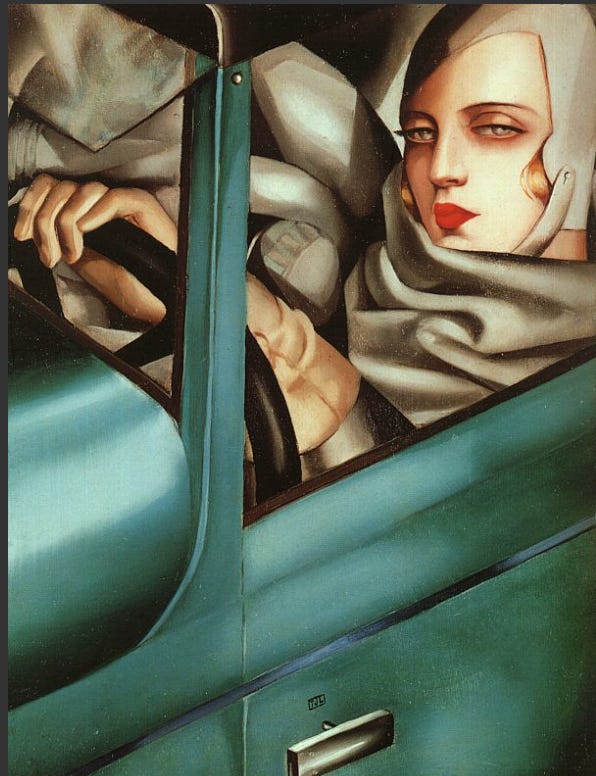
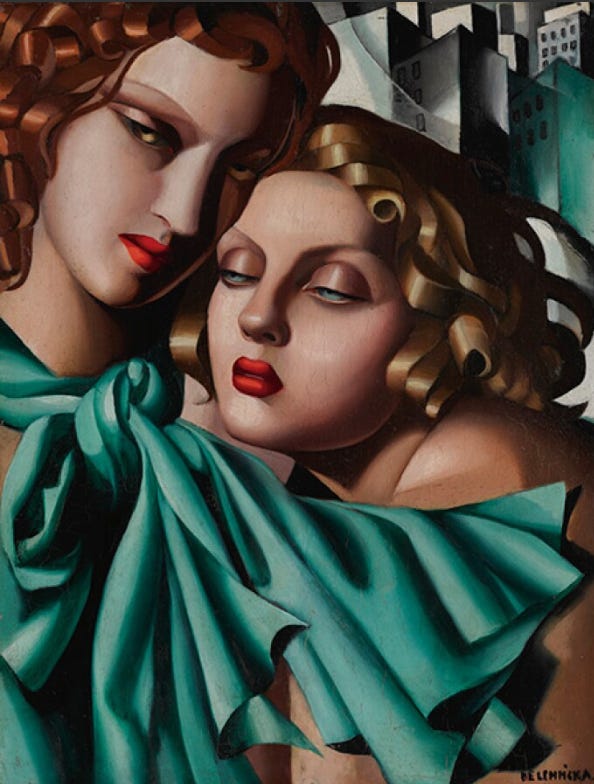
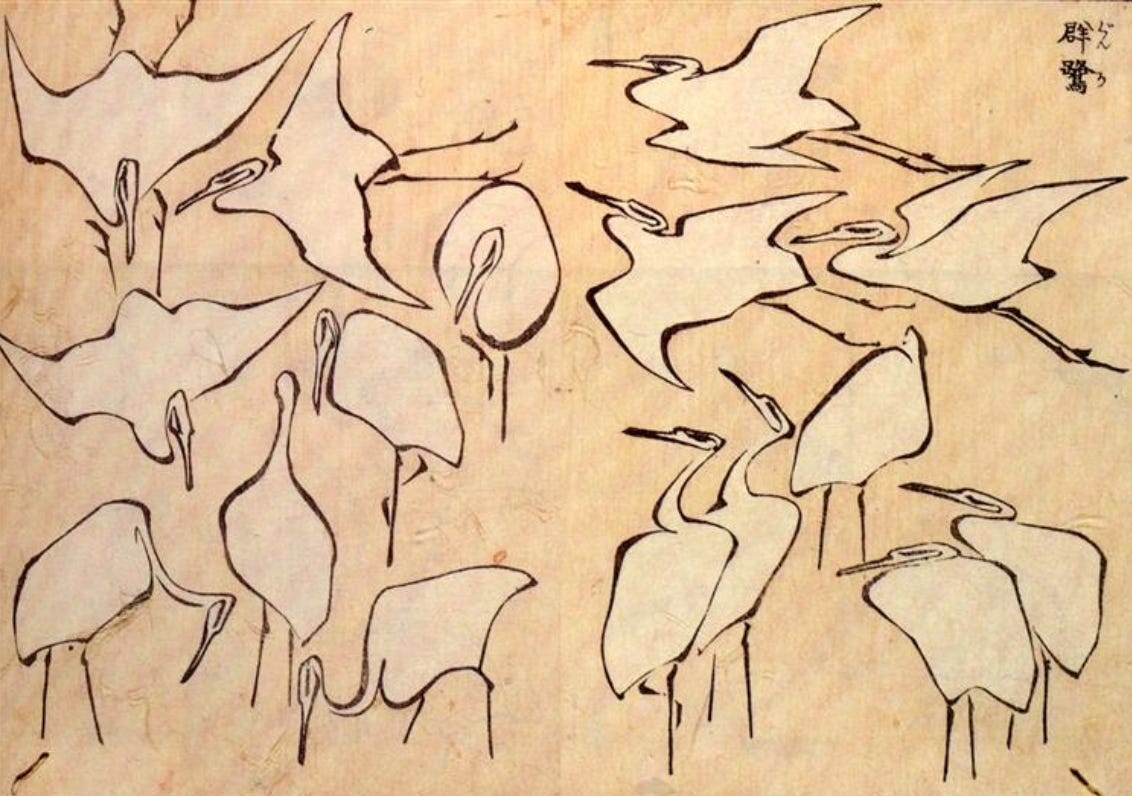
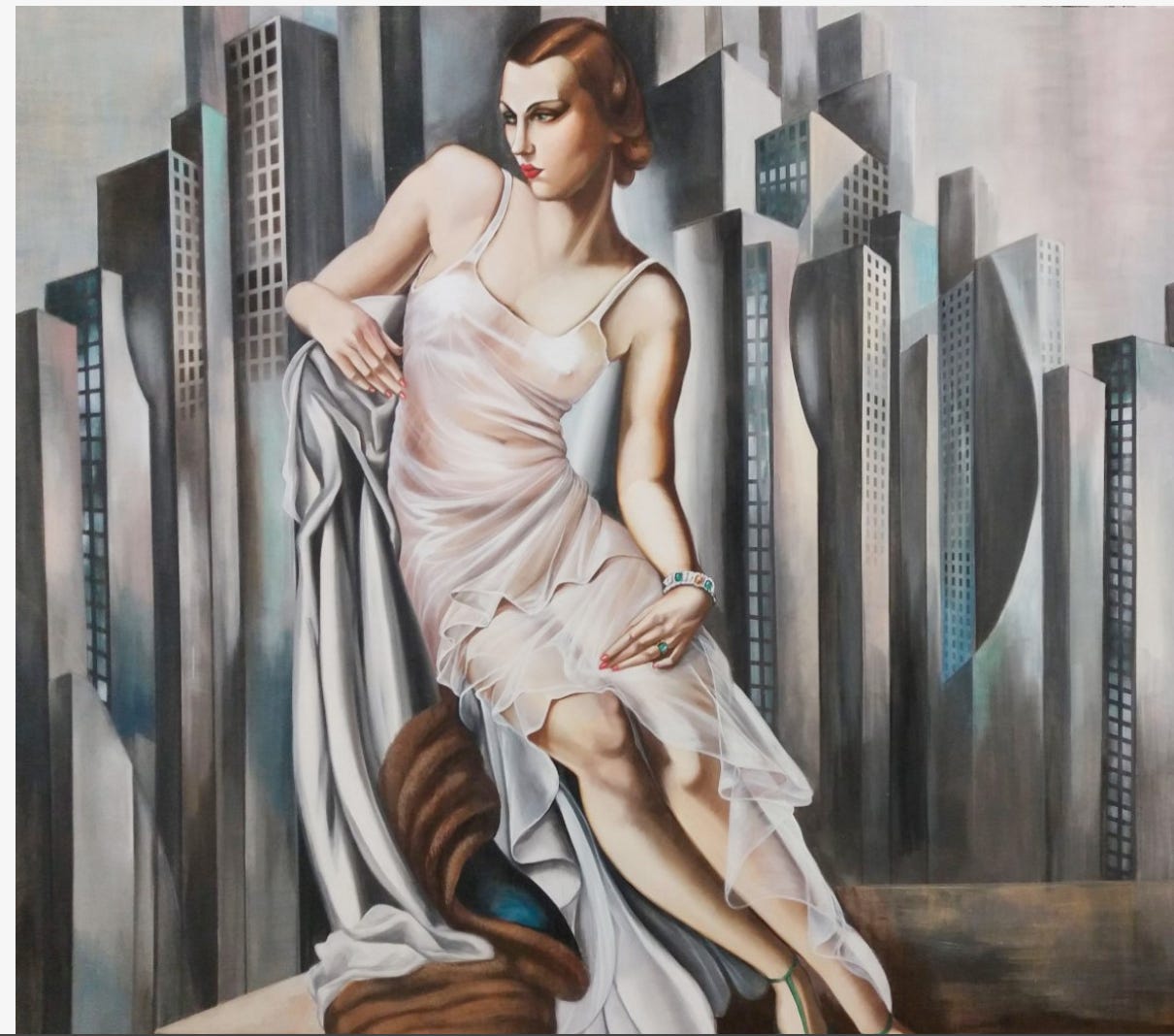
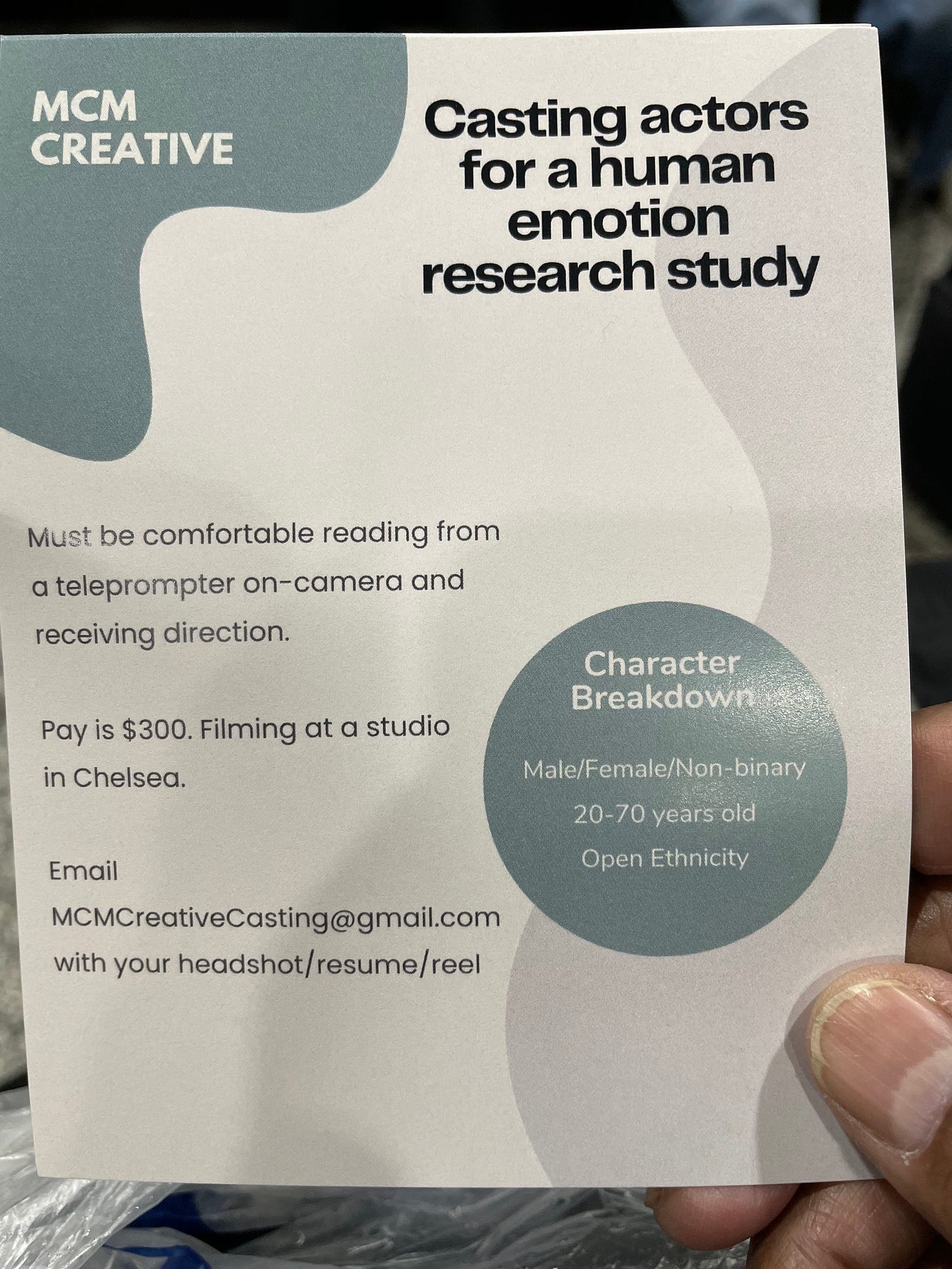
I love this, Emma. And it is the struggle of my life to break through my fear and be authentic, tell the truth, describe it all, as we see it—to take that risk. I wrote a play about Akhmatova, including that scene outside the prison that you mentioned. It always stood out to me as well.